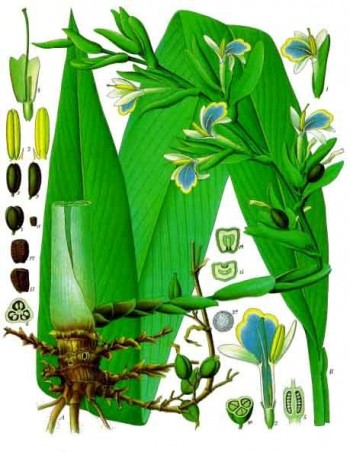Cardamom
Cardamom
The word “cardamom” is derived from the Latin cardamomum,[1] itself the latinisation of the Greek καρδάμωμον (kardamomon), a compound of κάρδαμον (kardamon), “cress” + ἄμωμον (amomon), which was the name for a kind of an Indian spice plant. The earliest attested form of the word is the Mycenaean Greek ka-da-mi-ja, written in Linear B syllabic script in the list of flavourings on the “Spice” tablets found among palace archives in the House of the Sphinxes in Mycenae.
Traditional medicine
Green cardamom is broadly used in South Asia to treat infections in teeth and gums, to prevent and treat throat troubles, congestion of the lungs and pulmonary tuberculosis, inflammation of eyelids and also digestive disorders. It also is used to break up kidney stones and gall stones, and was reportedly used as an antidote for both snake and scorpion venom. Amomum is used as a spice and as an ingredient in traditional medicine in systems of the traditional Chinese medicine in China, in Ayurveda in India, Pakistan, Japan, Korea and Vietnam. Species in the genus Amomum are also used in traditional Indian medicine. Among other species, varieties and cultivars, Amomum villosum cultivated in China, Laos and Vietnam is used in traditional Chinese medicine to treat stomach issues, constipation, dysentery, and other digestion problems. Tsaoko cardamom Amomum tsao-ko is cultivated in Yunnan, China and northwest Vietnam, both for medicinal purposes and as a spice.
http://en.wikipedia.org/wiki/Cardamom
Foto:
http://en.wikipedia.org/wiki/File:Elettaria_cardamomum_Capsules_and_seeds.jpg


